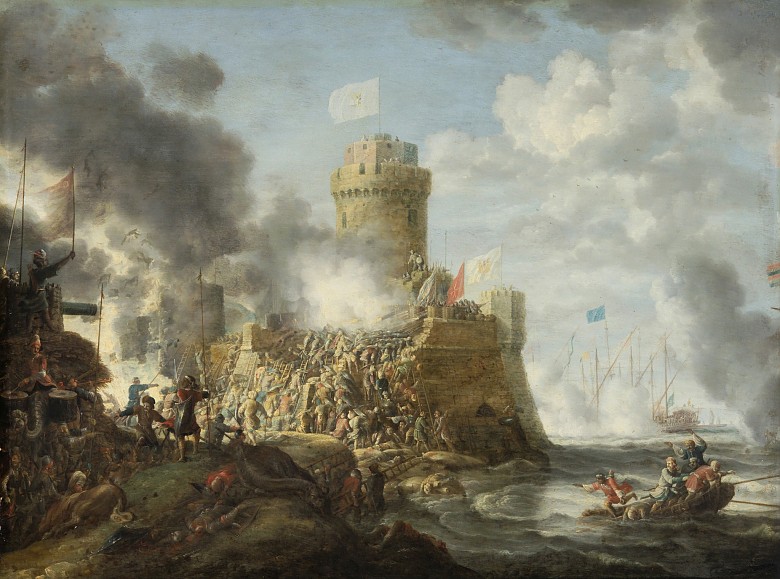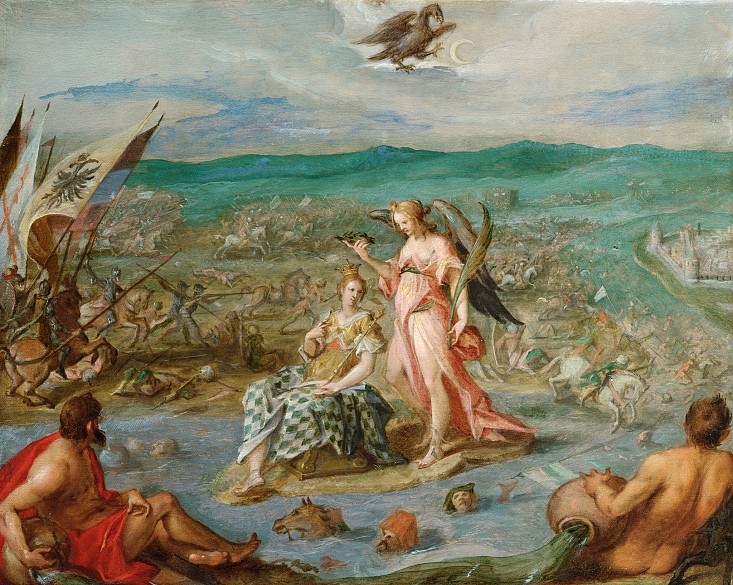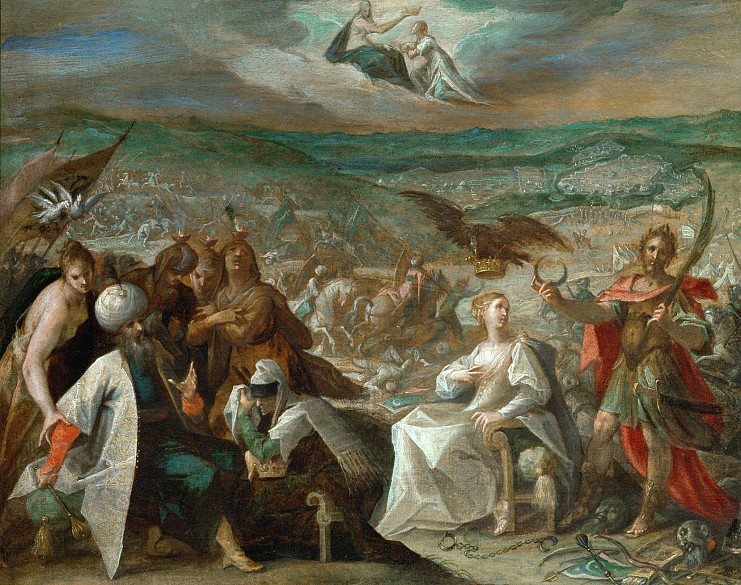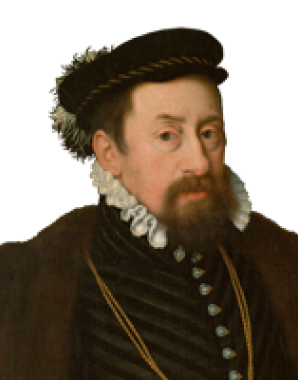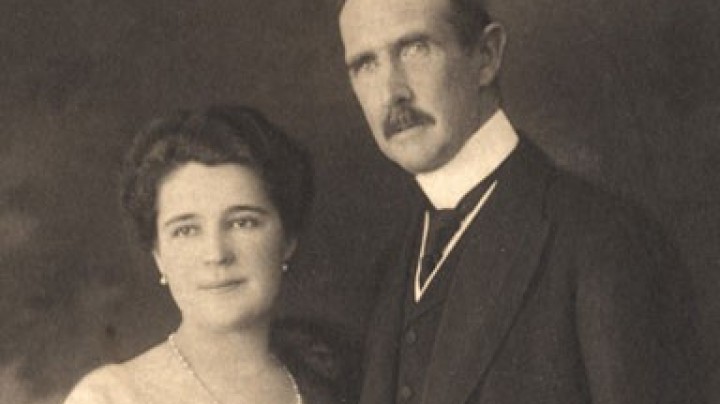(Minor) hostilities along the Military Frontier
Having the Ottomans as neighbours involved the Habsburgs in constant border hostilities. Larger-scale military operations took place in the years around 1600.
Propagandistic inscription commemorating the Habsburg recovery of the fortress of Raab, still to be found on numerous votive pillarsPraise and thank the Lord that Raab has now returned to Christian hands, 29 March 1598.
In the sixteenth century, Vienna was presented as the ‘shield of the West’ – the protector of the Holy Roman Empire against the Turks. With hindsight we can now see that this massive anti-Turkish propaganda was exaggerated: the Ottomans never sought to advance any further than the Habsburg capital. Nor, for those living in the border areas, was there any great difference between Habsburg and Turkish rule. In matters of religion the Ottomans were often more tolerant than the Christian rulers.
Along the border with the Ottoman Empire, the sixteenth century saw the development of a Habsburg buffer zone known as the Military Frontier, the most ancient part of which was the Croatian-Slavonian section beginning on the Adriatic coast. By the eighteenth century it had been extended as far as the Bukovina. Refugees from the Balkans had been encouraged to settle along the border as soldier-peasants; as such they were exempted from the payment of dues to feudal overlords but were permanently on call for military service in the small-scale hostilities that were a constant feature of life in this area.
After a number of more peaceful years full-scale war broke out once again in 1566 when a Turkish army of over 100,000 men marched on Hungary under the command of the same Sultan Suleiman, now 71 years of age, who had laid siege to Vienna in 1529. Emperor Maximilian II was supported with money and mercenary troops from the Holy Roman Empire and had over 80,000 soldiers deployed along the almost one thousand kilometres of the border. In September 1566 Suleiman died at the fortress town of Szigetvár, which the Habsburgs still nevertheless failed to capture, leaving around 40 per cent of the old kingdom of Hungary under Ottoman rule. In February 1568 Maximilian II concluded a ceasefire that obliged him to pay the new Sultan an annual tribute of 30,000 ducats.
In 1593 Rudolf II’s long Turkish war opened with the Battle of Sissak in Croatia, which was a victory for the imperial forces. The following year saw the loss of ‘Christendom’s key fortress’: Raab (present-day Győr). The recovery of Raab in 1598 was celebrated with rejoicing and much propaganda. In 1604 the Hungarian nobles took up arms under the magnate Stefan Bocskai and gained further political and religious rights for the Hungarian Estates. In 1606, against the will of his brother Rudolf II, Archduke Matthias concluded a peace in which the Emperor was the first time recognized as an equal by the Sultan.

